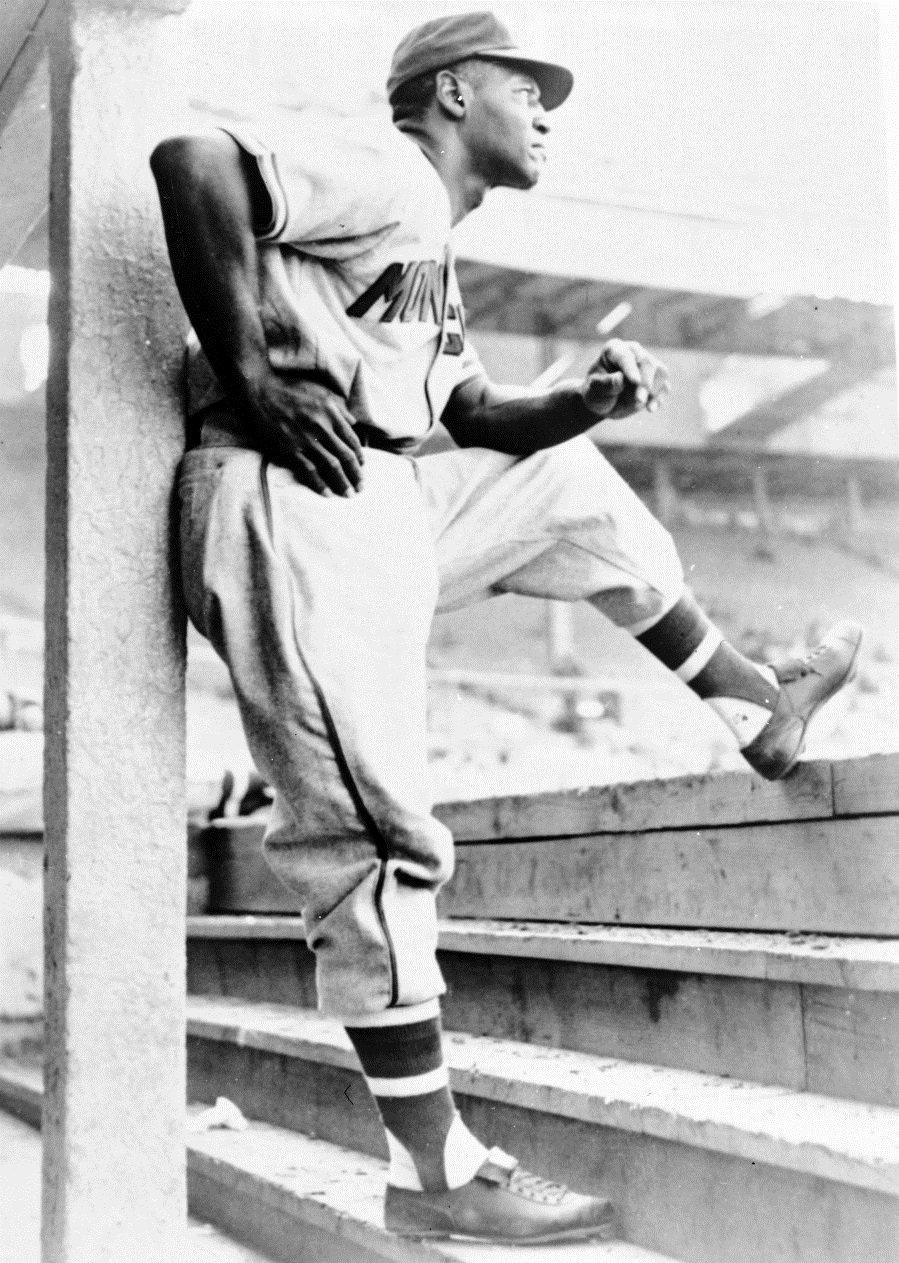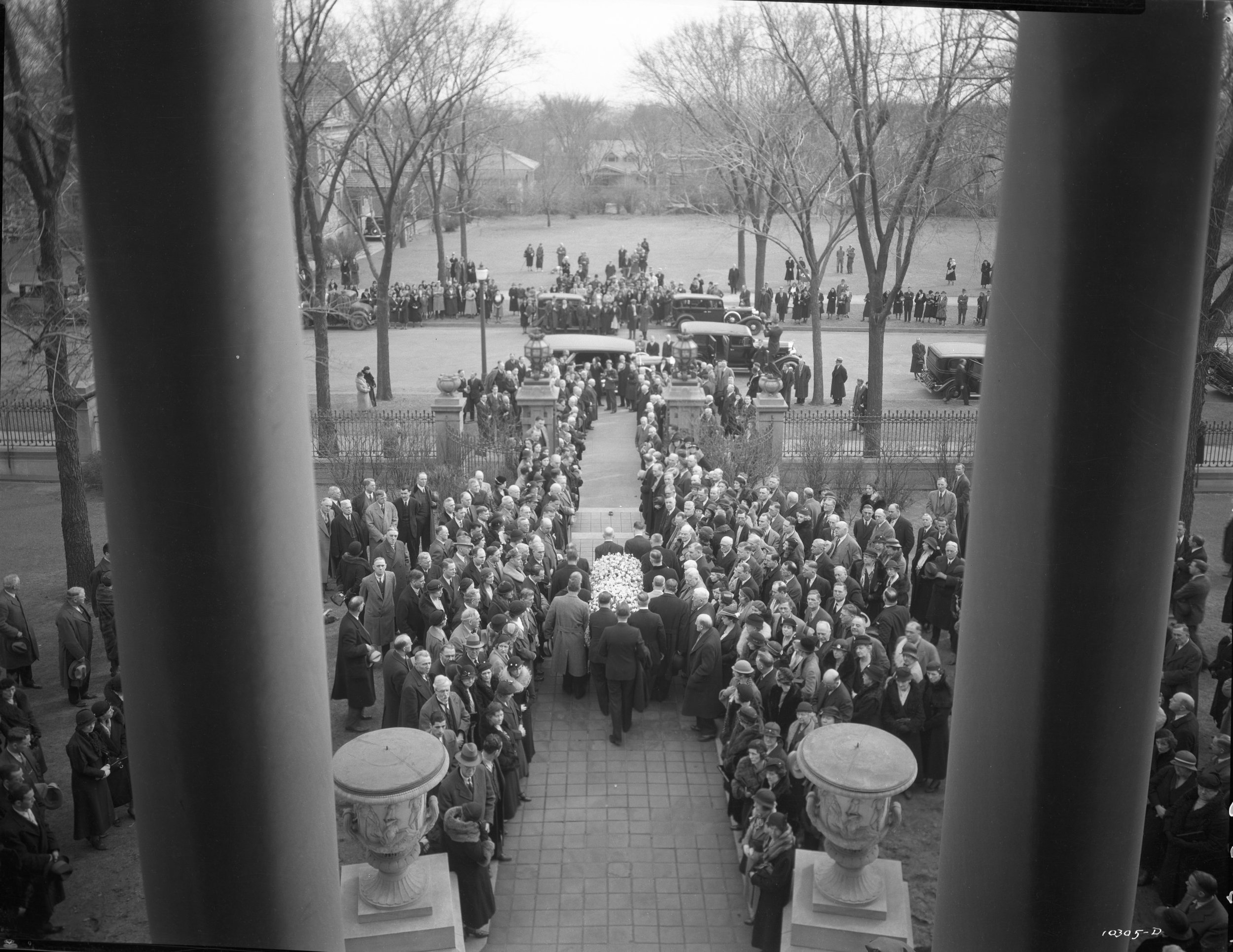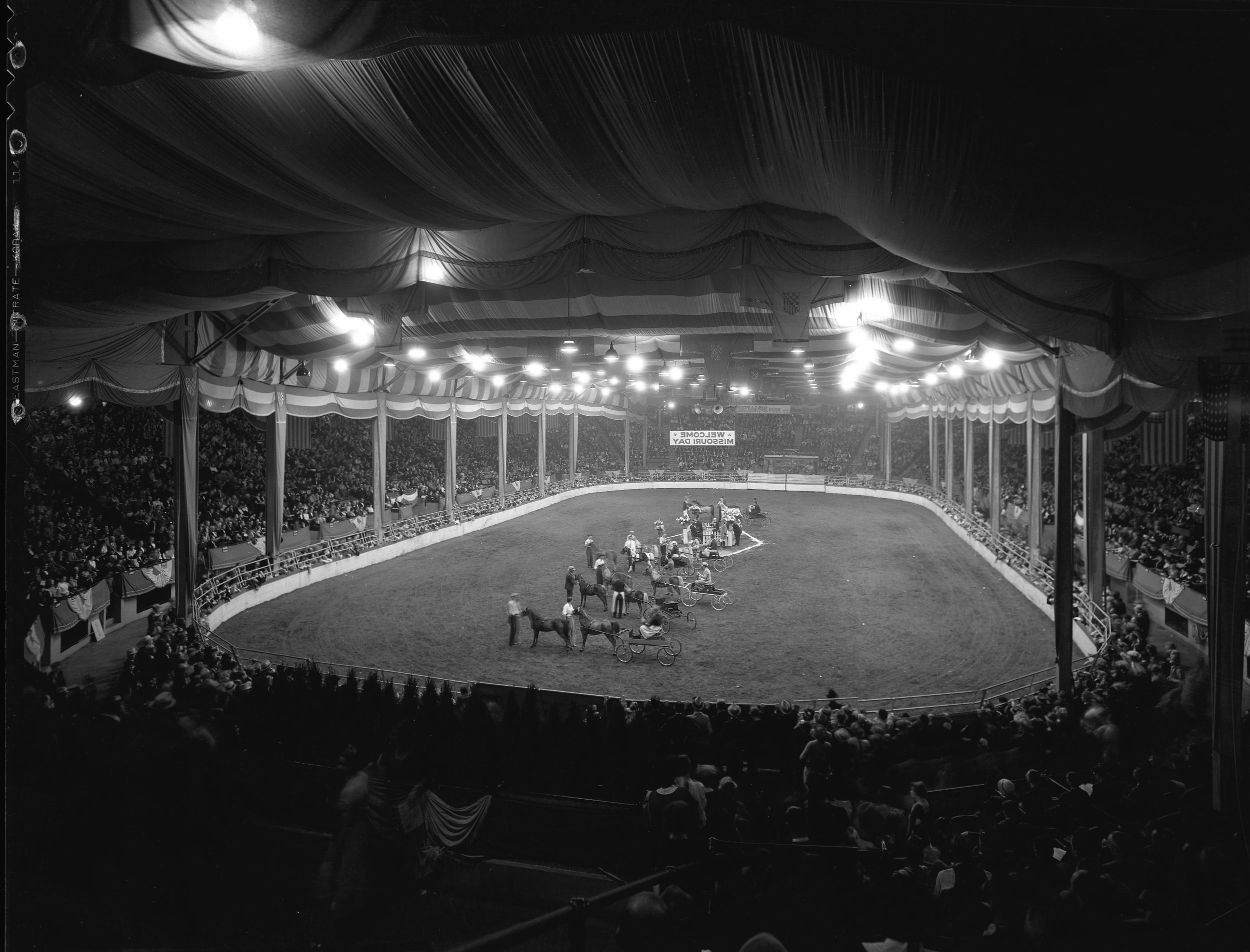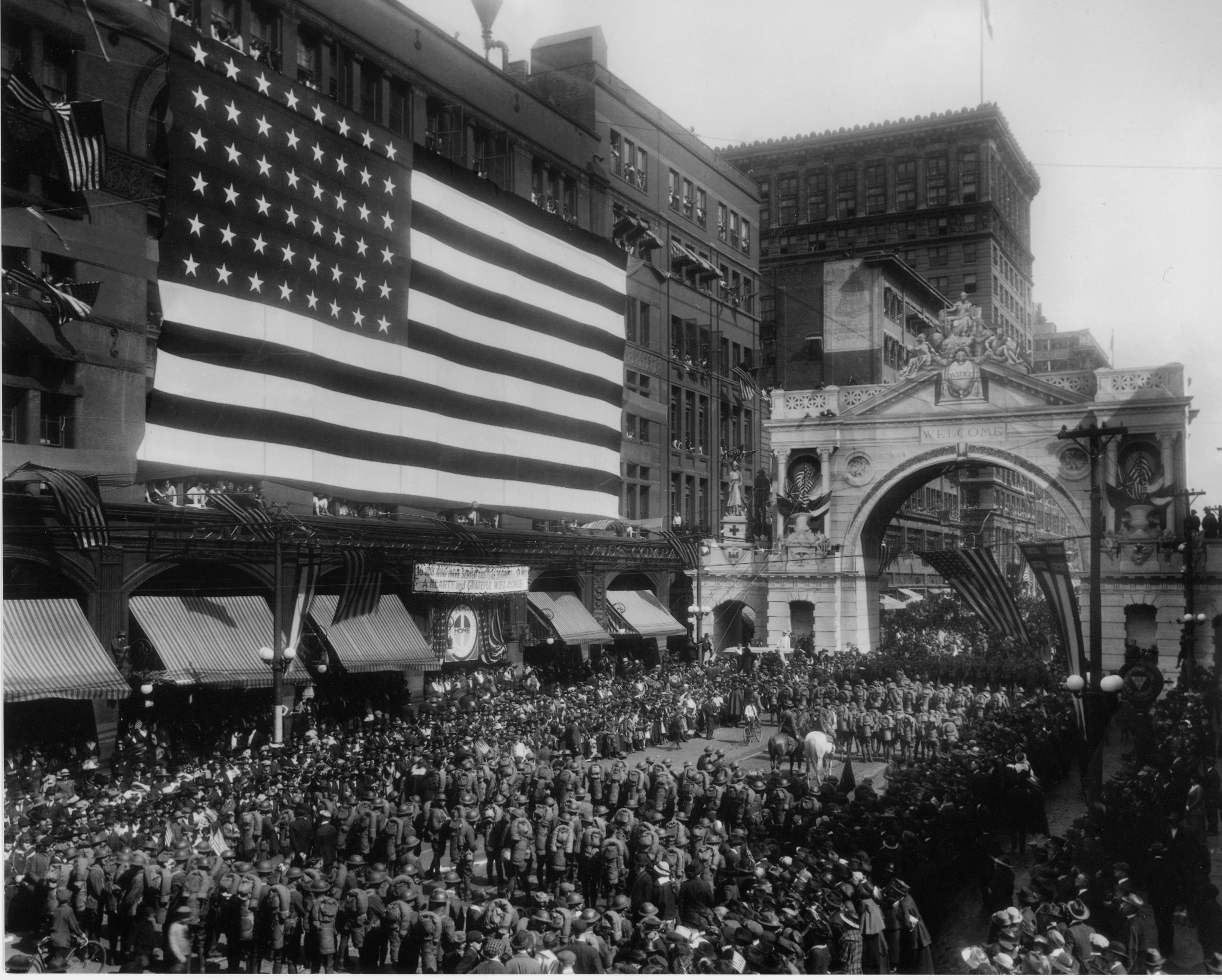More Space, Extra Room - New Era
By Brian Burnes
Erin Gray, digital archivist, was among the Society staff members moving archival holdings to a new subsurface storage facility in recent weeks.
The Jackson County Historical Society has been privileged to maintain one of the county’s most accommodating attics.
And, anyone with an attic knows how they tend to fill up.
After more than 60 years of receiving and processing the generous donations of county residents and families, the Society has run out of available nooks and crannies. Accordingly, this winter, Society staff members took unprecedented steps to ensure the longtime health of its one-of-kind archival holdings.
In January the Society leased subsurface storage space in Independence. A short drive from the Society’s two familiar locations on the Independence Square, the facility offers the constant archives-friendly climate-controlled environment that promises maximum security for the Society’s collections.
In recent weeks staff members began moving historical materials from not only the Society’s Archives and Research Library on the second floor of the Truman Courthouse, but also from the 1859 Jail Museum, just north of Independence Square, as well as from temporary storage space in Kansas City.
Ultimately about 85 percent of the Society’s archival holdings will be housed at the new subsurface space.
All of the materials being moved still will be easily accessible, said Danielle Hall, the Society’s archives and education director. Researchers, as usual, will want to request materials in advance, allowing staff members time to bring them to the Truman Courthouse archives.
Handle with care - moving thousands of Wilborn Collection images from temporary storage space in Kansas City to the new storage location in Independence took time and patience.
“My job as an archivist is to make the collections accessible to the public,” Hall said.
Meanwhile, the new underground space will free up room in the Truman Courthouse archives, making that area more researcher-friendly. Also, the newly-emptied square footage in long-standing Society storage spaces at the courthouse and jail will give staffers room to consider possible future donations, which had not been feasible in recent months.
Further, when the 1859 Jail Museum opens for the 2022 season on April 5, visitors for the first time will be able to inspect the jail cells on the building’s second floor, which long have been used for storage.
Photos, scrapbooks, newspapers, letters
The new storage strategy has been made possible in part by a generous gift from the estate of Virginia Jennings Nadeau, a former Society president who died in 2020.
Once shelved, the Society's archival photos and other holdings will benefit from the constant temperature controls the new subsurface space offers.
In the 1980s disagreement arose among Society members, some of whom believed the long-term preservation of the organization’s archival holdings best would be served by moving them out of Jackson County to a storage facility in Columbia, Mo.
Nadeau disagreed and prevailed, becoming president of the organization.
Recently the Society received the bulk of the bequest from the estate of Nadeau and her late brother, Frank Jennings. Board members, in recognition of the gift, thought it appropriate to earmark some of it to leasing the subsurface space, moving much of the Society’s holdings there, and developing new cataloging systems to makes its operation more efficient.
“We felt it was extremely important and timely to honor Mrs. Nadeau’s generous gift by investing the money into the new storage space,” said Stephanie Rohr, the Society’s president-elect.
The Society’s archives and collections committee had been working closely with staff members to determine storage issues, Rohr added.
“When this gift became available and knowing Mrs. Nadeau’s passionate plea to keep the Society’s archives in Jackson County, it only made sense to apply her gift to the archives to allow us to grow and properly store our materials.”
Preservation always has been central to the Society’s mission.
The current nonprofit organization formed in 1958 after word spread of the possible demolition of what is now the 1859 Jail Museum.
The group raised the funds to acquire the building and restore it, opening it to the public the following year.
In 1960 Society members dedicated the William Bullitt Howard School House, donated by relatives of Howard who – with his wife Mary - built the 12-by-16 foot building for their children in the 1870s. Workers moved the tiny school from Lee’s Summit to Independence, where it stands today in the jail museum courtyard.
Over the subsequent years all manner of donations came the Society’s way. Preserving them proved a constant community challenge.
At first Truman Library staff members maintained the Society’s growing collection of archival holdings.
By 1965 Society volunteers met every other week in the library’s basement, sorting gifts such as photographs, scrapbooks, newspapers and letters.
In 1973 workers relocated an estimated 14 tons of historical materials from the Truman Library to the Truman Courthouse.
Other materials, meanwhile, already had been stored in the courthouse basement. Those were the thousands of glass-plate negatives generated by the Strauss-Peyton photography studio of Kansas City from the early 1900s through the 1930s.
Today many of those irreplaceable portraits – thanks to the efforts of Society volunteer Bruce Mathews, who researched and restored the images - are accessible today.
The negatives will be placed in the new subsurface space, and the benefits of the new storage facility will be felt both over the near term and long term.
Over the long term, the new space will free up more room in the Truman Courthouse storage areas for Jackson County Circuit Court records. The Society’s custody of these documents is part of the Society’s services agreement with Jackson County, and also plays a role in the ongoing court records preservation project being conducted by the Missouri State Archives in Jefferson City.
In the near term, on April 5, the exhibit gallery of the 1859 Jail Museum will feature a display showcasing archival photos from several of the Society’s collections.
Those will include images from the Strauss-Peyton Collection.
The exhibit also will feature photographs from the Curtis Collection, recently donated to the Society by longtime Independence researchers and historians William and Annette Curtis. It also will include images from the Donald R. Hale Collection, which is devoted largely to Lee’s Summit history and was assembled by Hale, a long-time Jackson County historian.
And it also will include images from the Wilborn Collection.
Working with the Wilborn images
Erin Gray, Society digital archivist, works with negatives from the Wilborn Collection using a new scanner purchased with donations made during a Society online fundraiser last fall.
Acquired and donated in 2017 to the Society by former executive director Steve Noll and his wife, Marianne, the Wilborn photos represent one of the largest collections of Kansas City area archival images.
The more than 300,000 images, most of them negatives, include photographs taken between the early 1920s and the early 2000s. Tyner & Murphy, a Kansas City commercial photography studio operated since the early 1920s by F. Loren Tyner and Robert Murphy, generated many of them.
Kansas City photographer Clarence Wilborn, who operated his own firm for decades, acquired the Tyner & Murphy inventory in 1954. Years later his son Chris took over operation of what became known as the Wilborn Collection.
The recent effort to move these images to the new underground space represents only part of the current activity devoted to the Wilborn images.
Since the Society received the collection in 2017, staff members and volunteers have been working to scan the images and upload them to the Society website, as part of the Society’s Digital History Database.
To facilitate that effort, the Society needed to upgrade its archival equipment. Last October the Society launched an online Facebook fundraiser, seeking donations to purchase a new Epson Graphics Arts scanner, priced at about $3,500, to add to the Society’s existing scanner.
Society donors responded, contributing enough to not only to acquire the new scanner but also to fund the purchase of a separate laptop to be used with it.
The new scanner will speed the process of uploading more Wilborn Collection images online.
In recent years Society supporters also have donated funds allowing the Society to recently go live with PastPerfect, a digital service that will allow online visitors to browse the Society’s archival photos and also order digital file copies of them. PastPerfect is used by an estimated 11,000 museums nationwide and Society staff members expect it to be fully operational by late spring.
Some Wilborn photographs already have been posted on the Society’s Facebook page.
The images themselves have demonstrated the range of the collection. They’ve included shots of the 1928 interior of the Drum Room at Kansas City’s President Hotel, a night photograph of the Kansas City Power & Light skyscraper in 1931, a horse-drawn Manor Bakery Co. delivery wagon in 1932, a Missouri River towboat in 1934, a Kansas City soda fountain interior in 1939, and several Kansas City firefighters rushing an injured burn victim to safety in 1950.
The continuing task is huge and will not be completed overnight. While Hall believes the collection contains 300,000 images, the scanning and processing project may reveal even more.
“It’s possible there could be 360,000 to 400,000 negatives,” she said.
It will be the Society’s goal to make accessible as many images as it can in the most efficient manner, added Chris Stout, Society executive director.
“We want this work to be results-driven,” Stout said.
“We want to see big strides with the collections.”
These images were recently scanned by digital archivist Erin Gray from the Wilborn Collection in the past few months. From left, Monarchs baseball player and manager Buck O’Neil, the funeral of R.A. Long at Corinthian Hall, horse show at the American Royal, and the WWI Victory Parade in Kansas City.
To learn more about the Wilborn Collection, go to jchs.org/wilborn
Brian Burnes is president of the Jackson County Historical Society.








